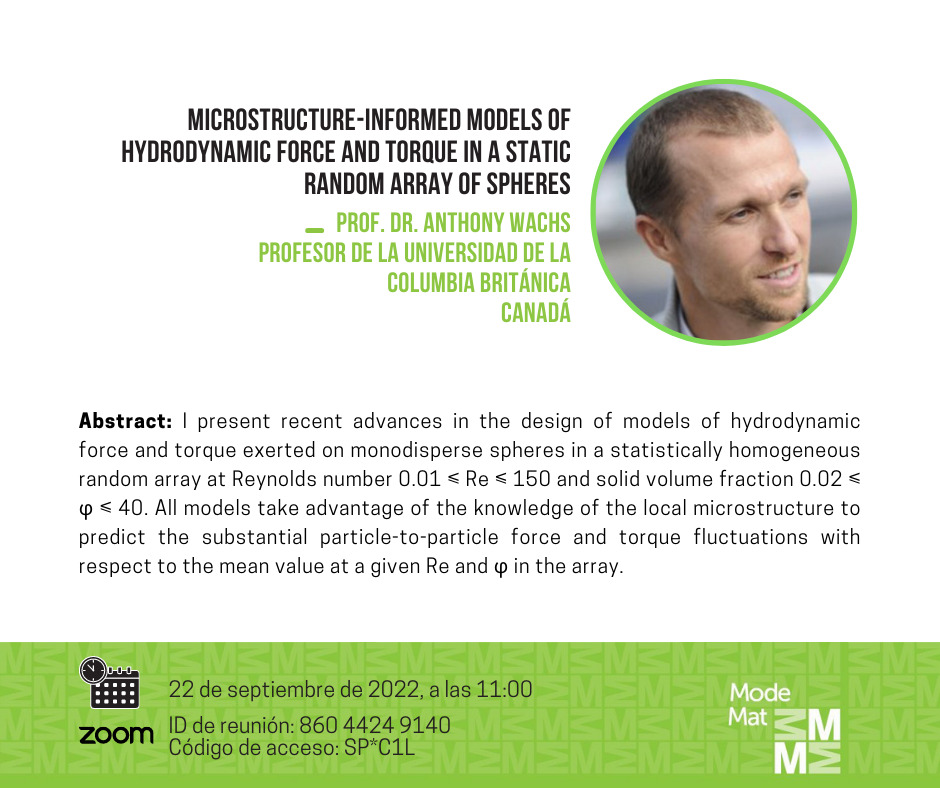
By Prof. Dr. Anthony Wachs. The University of the British Columbia, Canada
Seminar Date: 2022-09-22
I present recent advances in the design of models of hydrodynamic force and torque exerted on monodisperse spheres in a statistically homogeneous random array at Reynolds number, Re, between 0.01 and150 and solid volume fraction, phi, between 0.02 and 40. All models take advantage of the knowledge of the local microstructure to predict the substantial particle-to-particle force and torque fluctuations with respect to the mean value at a given Re and phi in the array. The first model and its interpolated extension are based on probability maps. The second model belongs to the class of data-driven physics-inspired models and relies on a customized neural network that incorporates physical knowledge. Both models relies on the same core assumption of superposition of pairwise hydrodynamic interactions between particles that is believed to be the primary limiting factor of the performance of both models. I also discuss training data and testing data collection with various particle-resolved direct numerical simulation methods including (i) methods on octree adaptive grids to properly resolve boundary layers at high Re and (ii) a scalable direction-splitting method to generate large data sets comprising up to 150,000 particles on thousands of cores.